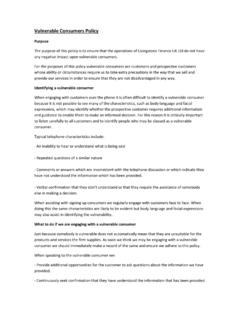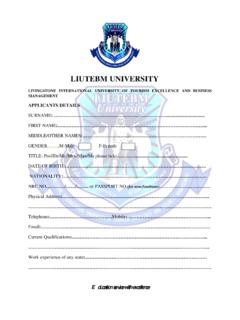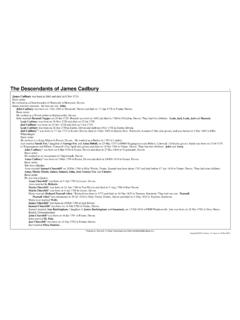Transcription of Trigger Finger (STenoSing - The Hand Clinic, an …
1 (About the Contributor) Ayisha E. livingstone , MDHand and Upper Extremity SurgeonMeli Orthopedics4701 North Federal Highway, Suite A-39 Fort Lauderdale, Florida 33308 954-771-8177 child of a military family, Dr. livingstone was raised all over the United States and Europe. At the age of 18 she moved to Tampa, Florida to obtain her Bachelor s degree at the University of Tampa. In 2003 she received her degree at the University of Miami. After completing both her internship and residency in the University of Miami s Orthopedic Program, she spent a year at the University of Pittsburgh for a dedicated Fellowship in the hand and upper extremity. Under the guidance of dedicated and nationally well-known orthopedic surgeons in Miami and Pittsburgh, Dr livingstone received a comprehensive education in all areas of orthopedic movement as the swollen part of the tendon tries to move through the narrow part of the tunnel.
2 With further attempts at digit motion, the tendon nodule pulls through the short tunnel and a snapping sensation accompanied by pain may then be felt. This cycle of damage can result in the Finger or thumb becoming stuck or locked with movement becoming increasingly painful and difficult. The cause of most cases of Trigger Finger is unknown. In some cases the condition is associated with repetitive grip activity. It may also be associated with diseases such as rheumatoid arthritis, gout, diabetes, and kidney indicate that Trigger Finger Trigger Finger ( stenosing TenoSynoviTiS) by Ayisha E. livingstone , MD A PublicAtion from the fort lAuderdAle hAnd clinic APril 2011 continued on page 3 rigger Finger refers to a sensation when the Finger or thumb feel stuck or temporarilysnagged with efforts to straighten (extend or bend) the digits.
3 In early stages there may be simply diminished range of motion, particularly lack of full flexion of the Finger or thumb. Trigger fingers cause a thickening of the tendon and are sometimes accompanied by inflammation thatnarrows the tunnel where the tendon glides back and forth to allow movement of the fingers. The tendon itself may develop a knot and cause an irritation from rubbing the narrow tunnel walls of the sheath. With initial attempt at Finger motion the tendon tries to move the Finger , but encounters resistance Celebrating 30 Years of Hand Therapy Excellence W2 HANDY TIPC reative Ideas in Orthotic FabricationDebby Schwartz, OTD, OTR/L, CHTP roduct and Educational Specialist, Orfit Industries Americaof a sewing machine bobbin to wind up the extra string (or dental floss).
4 The plastic bobbin is placed over a small 2-3 inch Orfitube plastic tube (Orfit Industries America). A small scrap of splinting material that has been dry heated keeps it from slipping off the tube and another scrap wrapped around the tube attaches it to the orthotic. Remember to always use dry heat (heat gun) to make thermoplastic material sticky and always use hot water to mold it. The string or dental floss pulls the affected joint into the maximum tolerable end range position and the excess string is wound around this bobbin. The end of the string is attached to Velcro loop which is anchored to Velcro hook on the orthosis. The patient can easily adjust the tension with the string wrapped around the bobbin.
5 NDebby Schwartz is the Product and Educational Specialist for Orfit Industries America and regularly conducts beginner, intermediate and advanced splinting workshops. You can contact her at with any questions. e hand therapists are very creative creatures, always looking for new and innovative treatment ideas and for inexpensive components for orthotic an instructor of splinting (orthotic) workshops, I frequently hear of good splinting tips to pass along and I sometimes come up with a creative idea myself. One tip that I am happy to share is the use of dental floss for static progressive orthoses. Dental floss is particularly well suited for putting tension on stiff joints as it is strong and does not fray easily.
6 It is readily available and even comes in different widths. It can be used for Finger static progressive orthoses and even for larger elbow orthoses! And dental floss is fairly easy to thread through holes in Finger slings and through pulleys or the line guides directing the correct angle of contribution to static progressive splinting is the creative use CASE AT HAND: From the Hand Therapist's PerspectiveManagement of Trigger Finger Chris W. Smethie, OTR/L, CHTAs hand therapists we are frequently referred patients with a recent onset of Trigger Finger . Conservative management most often consists of fabrication of a splint and instruction in exercises that are specific for the diagnosis.
7 Hand usage and work ergonomics may also be addressed. Individuals are educated to avoid repetitive gripping and sustained grasping. Additional treatment to help reduce inflammation may consist of modalities such as ultrasound, heat, cold, or the symptoms do not completely respond to conservative management, a steroid injection and/or surgery may be the next approach. Therapy may continue after the steroid surgical release of the pulley becomes necessary, the patient is generally seen by the hand therapist around 7-10 days postoperatively. Wound care management, edema control techniques and exercises to increase motion and eventually improve functional use of the hand are the focus of treatment.
8 Once the wound is completely healed, scar management measures are added to the treatment program. Finally, light non-repetitive hand strengthening exercises/activities may be part of treatment prior to discharge to a home hand therapist is an important member of the hand management team, and when working closely with the hand surgeon, the treatment outcome can only be enhanced. n3 Robin E. Miller, OTR/L, CHT, Fort Lauderdale Hand Clinic, Owner and Clinical Director, was proud to be one of the moderators at two sessions ofthe 37th Annual Philadelphia HandRehabilitation Foundation's Surgery and Rehabilitation of the Hand Symposium held March 5-8, 2011. One session presented the fabrication and indications for a static progressive elbow flexion orthosis made with DeltaCast , an economical alternative to thermoplastic materials and the other session covered a variety of topics related to therapy practice from negotiating contracts to crackingthe billing OF HAND STAFF NOTEST rigger Finger continued from page 1 may be related to certain occupational risk factors, including highly repetitive hand activity especially with grip, vibration and combination of excessive manual force, repetition and awkward or restrictive hand posture.
9 Trigger Finger or thumb is a relatively common condition. It has a higher incidence, 75% in women, than in men; most cases occurring in individuals between 52 and 60 years of age. It often occurs in both : The individual may need to wear a splint on the affected fingers for up to six weeks. Anti-inflammatory medication to reduce swelling may also be prescribed. Treatment plans, including corticosteroid injections into the tendon sheath, are reported to be 65% to 93% successful. However individuals with diabetes do not respond as well to cortisone injections and only have a 50% success rate. If nonoperative treatment fails, surgery may be required to open the tunnel area and allow freer movement of the tendon.
10 Occupational therapy may be recommended following surgery to restore normal hand : Prognosis usually is very good. Some individuals recover spontaneously, most require a corticosteroid injection with or without associated splinting. Some individuals may require up to three injections, but approximately 90% of the cases are resolved satisfactorily. Surgery usually has a very good outcome, although recovery may take several weeks. Most surgeons will offer up to 2 or 3 injections before strongly recommending surgical intervention. nInjection versus surgery in the treatment of Trigger fingerBenson LS. Ptaszek AJ. Journal of Hand Surgery - American Volume. 22(1):138-44, 1997 Jan. One hundred nine Trigger fingers in 102 patients were reviewed with respect to management plan and response to treatment.






